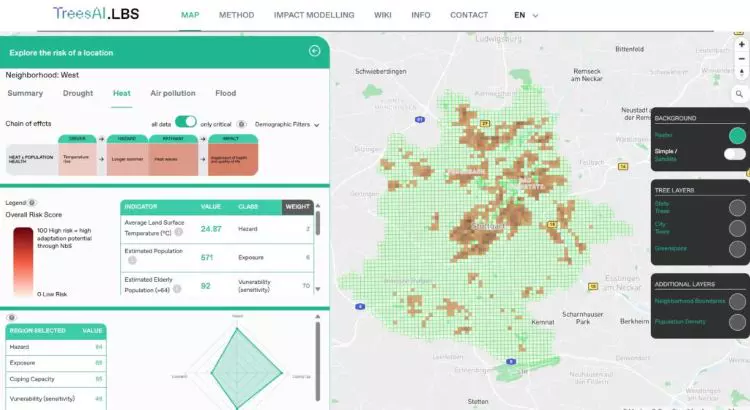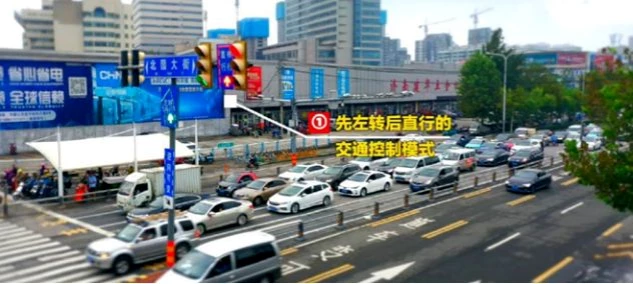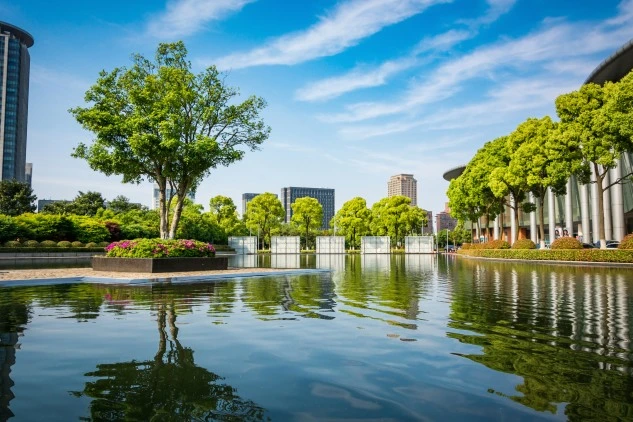The article is provided by our partner Alliance of European Mayors
Cities worldwide are facing significant challenges, including rising temperatures, the intensifying heat island effect, worsening floods, and increasing air pollution. Trees-as-Infrastructure responds to these challenges by redefining urban planning and positioning trees as essential urban infrastructure. Urban planners and policymakers are beginning to rethink how the multiple benefits of urban nature can be systematically integrated into city planning. As a flagship approach to sustainable cities and climate adaptation, Trees-as-Infrastructure is leading this transformation by integrating trees into urban systems in ways that go far beyond aesthetics. In our insightful conversation with Sebastian Klemm, co-holder of Trees-as-Infrastructure and the NbS Portfolio at Dm Capital Systems, and Sofia Valentini, a strategic designer at Dark Matter Lab, we explored the challenges cities face today and how nature can play a more integral role in urban infrastructure.
Why trees are essential
Trees play a vital role in improving urban environments by cleaning the air, managing water, and significantly reducing heat. Studies show that increasing tree coverage from 0% to 25% can lower urban air temperatures by approximately 4.4°C, helping to mitigate the urban heat island effect. Trees also reduce energy costs by providing shade and cooling buildings. In some cases, strategically placed shade trees can lower cooling energy consumption by up to 30%.
Beyond their direct environmental benefits, trees provide spaces for communities to connect, boost mental health, and enhance overall well-being. Trees-as-Infrastructure highlights these entangled values, showing that trees are also essential for the interconnected public health, social well-being and a thriving economy.
Stuttgart: a leading example of Trees-as-Infrastructure
In 2023, Stuttgart, Germany, became a flagship site for Trees-as-Infrastructure. Over several months, with co-financing from the Stuttgart Climate Innovation Fund and The Nature Conservancy, the Trees-as-Infrastructure team brought together urban planners, city arborists, and environmental specialists from across Stuttgart’s city departments. Their goal was to implement a data-driven, collaborative approach to urban nature while fostering integration with broader sectoral changes. By using the innovative Location-Based Scoring (LBS) methodology, they developed an agile framework to identify high-priority areas for nature-based interventions. This approach focuses on compounded risks and adaptation opportunities in areas with vulnerable populations (including the elderly, children, and low-income groups), reimagines maintenance strategies for trees under drought stress, and pinpoints locations at high risk of stormwater flooding that could benefit from being unsealed. In this way, Trees-as-Infrastrastructure’s Location-Based Scoring approach provides a data-backed foundation for determining where Nature-based Solutions interventions and corresponding investments are most needed.

Screenshot: Trees-as-Infrastructure’s Location-based Scoring at the example of Stuttgart
The methodology: how Trees-as-Infrastructure location-based scoring works
Trees-as-Infrastructure’s Location-Based Scoring (LBS) methodology is central for cities to effectively prioritize nature-based solutions (NbS) and green urban infrastructure. It is designed to address the specific risks and vulnerabilities of urban areas.
The methodology unfolds in five stages:
- Identifying risks: analyzing hazards such as heat islands, flooding, and air pollution, and mapping vulnerable communities most exposed to these risks.
- Gathering data: combining environmental and census datasets to highlight compounded vulnerabilities, e.g. elderly populations in heat-prone areas lacking green cover.
- Analyzing spatial data: GIS tools overlay risks and resilience factors such as ventilation, healthcare access, sealing rates, and existing green infrastructure.
- Stakeholder collaboration: multi-stakeholder workshops ensure local voices, including vulnerable groups, shape nature-based solutions.
- Ensuring comprehensibility: interactive dashboards provide policymakers with accessible tools to design NbS projects that enhance urban resilience.
Tackling funding challenges
One of the key challenges in urban forestry is securing the necessary funding. Trees-as-Infrastructure is addressing this by developing innovative financing models. By treating trees as valuable assets that reduce risks and save money in areas like public health, building energy, and wastewater management, the Trees-as-Infrastructure and Dm Capital Systems teams are creating systemic financing approaches to attract new sources of investment.
Expanding the vision of Trees-as-Infrastructure for long-term success
While Stuttgart serves as a groundbreaking example, the methods developed by Trees-as-Infrastructure are designed to be adaptable to other cities with unique challenges. By focusing on collaboration, data-driven analysis, and innovative financing models, Trees-as-Infrastructure and Dm Capital Systems provide a scalable framework for integrating nature into urban infrastructure.
However, planting trees is only the first step. Ensuring their growth and survival over the long term requires consistent maintenance and active community participation. Trees-as-Infrastructure addresses these needs by fostering Commons-Public-Private partnerships that link civic stewardship programs with innovative financing, ensuring that urban forests remain resilient and impactful.
Conclusion
Trees-as-Infrastructure introduces a mission-driven approach to revaluing urban nature as essential infrastructure. By treating trees and other green urban systems as critical, investable assets, cities can tackle climate challenges while improving quality of life. The success of Trees-as-Infrastructure in Stuttgart offers a scalable blueprint for sustainable, resilient, and inclusive cities worldwide.
About the author: Sila Eğridere, architect and smart city expert
Source: Trees-as-Infrastructure: Ensuring Cool, Green and Resilient Cities | Mayors of Europe
Read more about green space in cities here and here


